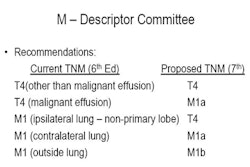A new research paper has quantified what radiology advocates have long maintained -- that medical imaging has a definite impact on the quality of healthcare and, by extension, life expectancy.
Life expectancy in the U.S. increased by a total of 2.37 years between 1991 and 2004, with advanced medical imaging accounting for 0.62 to 0.71 years of that increase, according to research released this week by the National Bureau of Economic Research.
In the study, lead author Frank Lichtenberg, Ph.D., of Columbia University in New York City examined three different measures of the quality of medical care: the quality of diagnostic imaging procedures (CT and MRI), the average quality of practicing physicians, and the mean vintage of outpatient and inpatient pharmaceutical drugs.
To derive a measure on the quality of imaging procedures, the paper divided the number of advanced imaging procedures conducted in a state for a particular year by the number of standard imaging procedures, finding that the percentage of advanced imaging procedures in the U.S. increased from 9.3% in 1991 to 18.8% in 2004.
The paper found that while medical imaging accounted for 0.62 to 0.71 years of the increase in life expectancy, the use of newer outpatient prescription drugs increased life expectancy by 0.96-1.26 years, and the use of newer provider-administered drugs increased life expectancy by 0.48-0.54 years. A decline in the incidence of AIDS increased life expectancy by 0.18-0.20 years, while a minor decline in smoking increased life expectancy by 0.10 years.
Factors that contributed to a decline in life expectancy included rising obesity, which reduced life expectancy by 0.58-0.68 years, and a drop in the quality of medical schools attended by physicians, which lopped 0.28-0.47 years off life expectancy. Lichtenberg said that "between 1.05 and 1.52 years of the 2.37-year increase in life expectancy is unexplained."
The paper received research support from several institutions, including the Centre for Strategic Economic Studies; Victoria University in Melbourne, Australia; the Manhattan Institute for Policy Research; and Siemens AG, parent company of Siemens Healthcare of Malvern, PA.
Copyright © 2009 AuntMinnie.com



















